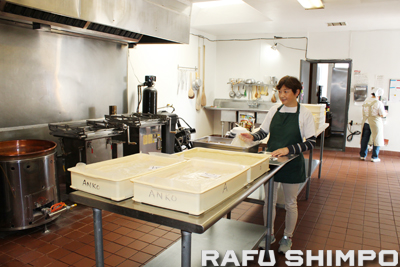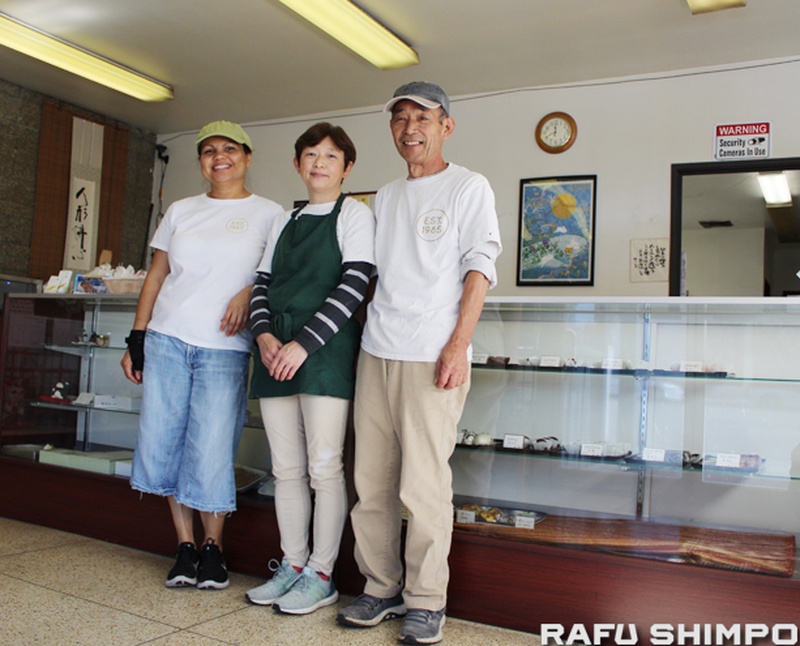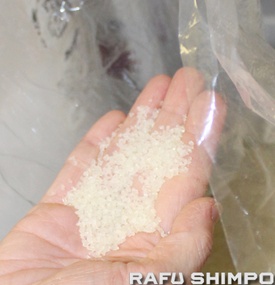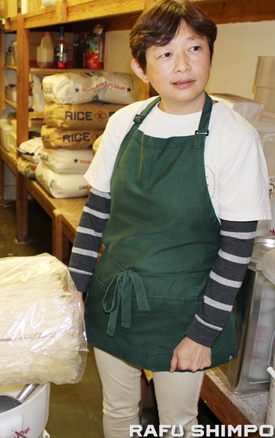In 1985, a craftsman from Kumamoto opened a Japanese confectionery shop in Los Angeles. Led by a confectioner who had made a name for himself all over Japan, it didn't take long for the shop to become a trusted presence in the local tea ceremony community. The shop was doing well, but then the first misfortune struck, and it found itself in dire straits. The younger sister and her husband took over the shop from the founding family and rebuilt it. Despite overcoming many difficulties and facing many anxieties, they now run the shop smoothly using the craftsmanship they inherited from their older brother. "I've come this far with the help of the people around me."
We followed the 34-year history of Chikara Mochi, one of the few remaining Japanese confectionery shops in Los Angeles.
All Japanese sweets are made with care, with great care and great attention to the ingredients.
It's 2:30 a.m. The lights are on at Chikara Mochi, a Japanese confectionery shop on Western Street in Gardena, and owner Koike Masafumi starts heating the steamer. Koike is alone in the large workshop lined with equipment until the steamer is full of steam. After about half an hour, when the mochi are ready to be steamed, the next craftsman arrives. The time it takes for the mochi to steam depends on the type. When one mochi is done, the other craftsman arrives.

The mochi is stretched and cut into equal pieces. The finished bean paste is wrapped in mochi and then decorated by Koike's wife, Japanese confectioner Kinue Ito. She packs and ships the sweets together with a few other staff members. The freshly made sweets are lined up in front of the store at 9:00 a.m., when it opens. Then, by around noon, they finish preparing for the next day.
The number of Japanese sweets alone is 300 per day. If you add baked goods such as bean-jam buns and chestnut buns, red rice, dumplings, and ohagi, the number increases by another 100 or more.
If they were only selling Japanese sweets at their stores, they would be able to start production at 5 or 6 a.m. However, in order to sell wholesale to Japanese markets, they start production early to coincide with the arrival of the shipping trucks. Koike explains the current situation, saying, "There used to be five Japanese sweet shops in LA, but now there are only three. Of those, two are wholesalers."
The Japanese sweets that Kinueda makes by hand are small and elegant. The delicate design, beautiful decoration and natural colors are easily accepted by Japanese people. "The size is made to fit into a small box made in Japan. If it's too big, it won't look sophisticated. We're not being stingy," Kinueda says with a laugh.
It's not just the boxes that are sourced from Japan. The quality of the agar from Nagano Prefecture is so high that it cannot be substituted by that from neighboring countries. All the special decoration materials for the wagashi are also sourced from Japan.
Their commitment to using quality ingredients is also evident in the sugar, azuki beans, glutinous rice, and rice flour, which are all sourced locally.
She cannot use ready-made bean paste. "I cook the beans and remove the astringency from the red beans. I use that astringency in the red rice. I can't do it unless I do it from the beginning (in order). That's the cycle my body is in. If I start halfway through (using ready-made products), I won't know what to do."
However, they cannot use Dainagon (a type of red bean) for the bean paste. "We wouldn't be able to break even unless we charged three times the price," the two laugh.
What kind of ingenuity does he use to perfect the flavor he inherited from his predecessor? "It's about not sparing any effort and doing things with the right balance. With Western sweets, you have to measure the temperature and the amount precisely, but with Japanese sweets, everything is more about the right balance." When asked if this can also be applied to Japanese cuisine, Kinueda said, "I think so." "The finished product changes depending on the season and temperature. The way the ground flour absorbs water also changes depending on the day. It's different every time. Because the taste is different every time, you never get bored," Kinueda said. Koike agreed, "That's why customers don't get bored either."
They use ingredients with care. They spare no effort. "As long as we continue, I don't think this style will change," Kinue emphasized.
"My brother was a skilled craftsman," says Riki Maruoka, who founded his own company in 1985.
Chikara Mochi was founded by Maruoka Chikara, Kinue's older brother. After graduating from junior high school in Kumamoto prefecture, Maruoka left for Kansai at the age of 15 to become a Japanese confectioner. His wife Yoko recalls, "In the old days, apprenticeship was like an apprenticeship where you also had to babysit. After leaving, you would travel to regions where the tea ceremony is popular and learn about the Japanese confectionery that is passed down in that area. Sometimes you would make Japanese confectionery with just a spatula while sitting on a tatami mat."
After working in various parts of Japan for about 10 years and honing his skills, he was invited to come to the United States by Mikawaya, a Japanese confectionery shop in LA that was looking for a craftsman. He worked there for about two years from 1971, and returned to his hometown when his contract ended. In 1973, he opened his own shop, Chikara Mochi, in Kumamoto City. In 1977, Mikawaya called Maruoka again, and he returned to LA with Yoko and their two sons, this time with the aim of settling down permanently.

"I became independent in 1985. At first, I was in LA, on 7th Avenue and Stanford, and did wholesale for about two years," Yoko said, recalling her memories of that time. After that, I moved to Gardena and started retail. At the time, there were many Japanese living in Gardena, so most of my customers were Japanese or Japanese-American.
Maruoka was an artisan by nature and "lived his life thinking only about Japanese sweets," and his only hobby was drinking small amounts of alcohol.
They began to receive many orders from people involved in the tea ceremony. Perhaps out of a desire to support a young store, every school placed orders with the store. "My brother was a skilled craftsman," Kinue said with emotion.
The sudden death of the owner, Mr. Maruoka, and the absence of craftsmen puts the store in a further predicament
The store had been doing well through the bubble economy of the late 80s. In 1990, Kinue moved to LA and helped out at her brother's store while living as a housewife. In 1997, the Japanese economy started to decline and expatriates returned to their home countries. The store was hit by misfortune when the owner suddenly passed away. Yoko, who suddenly took over the store from Maruoka, hired her two sons, who were in their 20s, as craftsmen. It seemed as though they had somehow managed to survive the loss of both the owner and the craftsmen at the same time, but nearly 10 years later, the store found itself in a second predicament.
His sons, who had been working hard in an unfamiliar world, left the store one after another, leaving it without a craftsman.
The only successor is Kinue, who has been watching her brother's work from the sidelines. "All the employees said they wanted to continue, so I decided to take over." She can't close the store. Both her employees and herself have families to support.
Her husband, Koike, also played a major role in her decision to make this decision. Before they got married, Koike, who had never lived a life related to Japanese sweets, would frequent the shop as a friend of Maruoka's. He was originally a limousine driver specializing in VIPs. When Kinue, who took over the shop, became ill and he himself hurt his back and had to leave his job as a driver, he began helping out his family little by little. Eventually, the Japanese sweets shop became his main business. "It was hectic," the couple recalls. They took over the shop properly in 2009. At the time, they never imagined that further difficulties would await them.
*This article is reprinted from the Rafu Shimpo (January 1, 2019).
© 2019 Mie Aso / Rafu Shimpo






